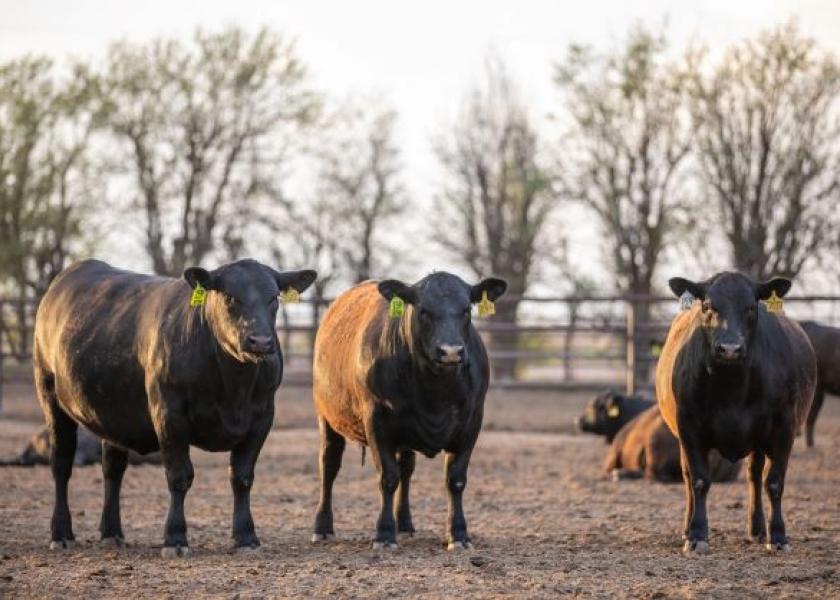Angus Tackles Bovine Congestive Heart Failure

Biological challenges are rarely simple to solve. With a host of variables in real-world scenarios, bovine congestive heart failure (BCHF) certainly falls into the "complicated" category.
Is it a management issue, a genetic problem or a little bit of both?
A recent episode of The Angus Conversation explored the topic, with guests Randall Spare, Ashland Veterinary Center; Darrell Stevenson, Stevenson Angus Ranch; and Kelli Retallick-Riley, Angus Genetics Inc. (AGI).
"If there is an underlying genetic component, no matter how small it is or large it is, we want to find that out for American Angus Association members, because when they make a change, it’s a change for the beef industry," Retallick-Riley said.
If genetics are even partially to blame, breeding tools could allow cattlemen to mitigate the risk, she said.
"This isn’t 100% controlled by genetics, and so that means to us that obviously there [are] a lot of other environmental and management factors that are going to influence this," Retallick-Riley explained.
At its core, BCHF is a noninfectious form of heart disease that causes the heart to stop as the condition progresses. Chronic high blood pressure damages tissues, causing inflammation that results in less elasticity — and that makes the heart work harder. While the definition seems straightforward enough, the challenge is finding out what causes it and what cattlemen can do about it.
When trying to solve any health puzzle, clients will often ask Spare, "Why?"
"They generally want me to give them one specific answer. Well, because you have low vitamin A, or you’re not feeding them enough," he noted. "I’m reminded about a gentleman at a diagnostic lab when I was first starting to practice, and I was wanting to give that one specific answer. And he said, ‘Well, Randall, oftentimes it’s not one thing that causes the problem; it’s a myriad of issues.’"
That’s proven true throughout his career, and early research on BCHF would show the same.
"We’ve changed the animals that we’re feeding today, and we’ve changed our practices … does that make a difference?" Spare asked.
Animals go on feed heavier, are fed longer and are more profitable the more efficient they are, so that’s been the target for decades.
Labor challenges at the yard could contribute, too, he said.
"We’ve created systems to feed cattle according to what the computer says, and we don’t have those people who have been raised on ranches and farms that drive the feed truck and ride a horse in the feedyard," Spare said, noting not all yards see the same pressure.
That leads him to believe there is a strong management component.
Kansas State University’s Beef Cattle Institute completed a retrospective analysis that also showed a wide range in BCHF incidence across yards of all sizes, types and location.
"There is no bias," Stevenson said, recapping the study. "There’s no significance towards sex, towards weight, towards breed of cattle — and the simple fact is that as of today, over 70% of the harvested cattle in the United States are black-hided."
BCHF happens in native beef, beef-on-dairy and straight dairy populations at nearly the same incidence, and that’s close to 0.07% of deaths across a population of 4.5 million. Yet, making hearts healthier is a hot topic, because in addition to curtailing feedyard deaths, it could help make the surviving population better, too.
"I think we will be overwhelmed with results in general cattle health and general feed efficiency if we can actually narrow this down," Stevenson said.
Today, Angus is supporting research through the Angus Foundation, working on the Heart Health Initiative through AGI, providing information through Angus Media and funding from Certified Angus Beef. It’s an across-entity approach to helping find answers and solutions, Stevenson says.
Additionally, Cargill, Five Rivers Cattle Feeding, Colorado State University and the U.S. Meat Animal Research Center (USMARC) are collaborating to find answers.
To catch the entire conversation, find "Bovine Congestive Heart Failure: An Angus Issue, an Industry Issue or No Issue At All?" on all major podcast platforms, or visit www.TheAngusConversation.com.







